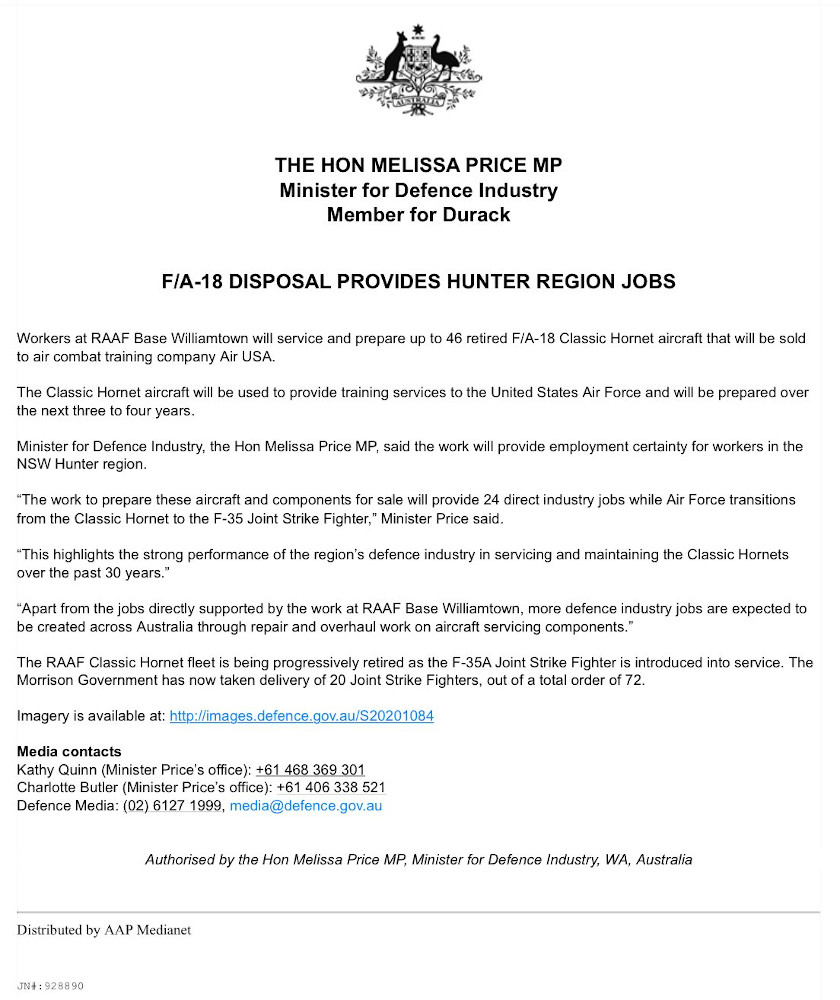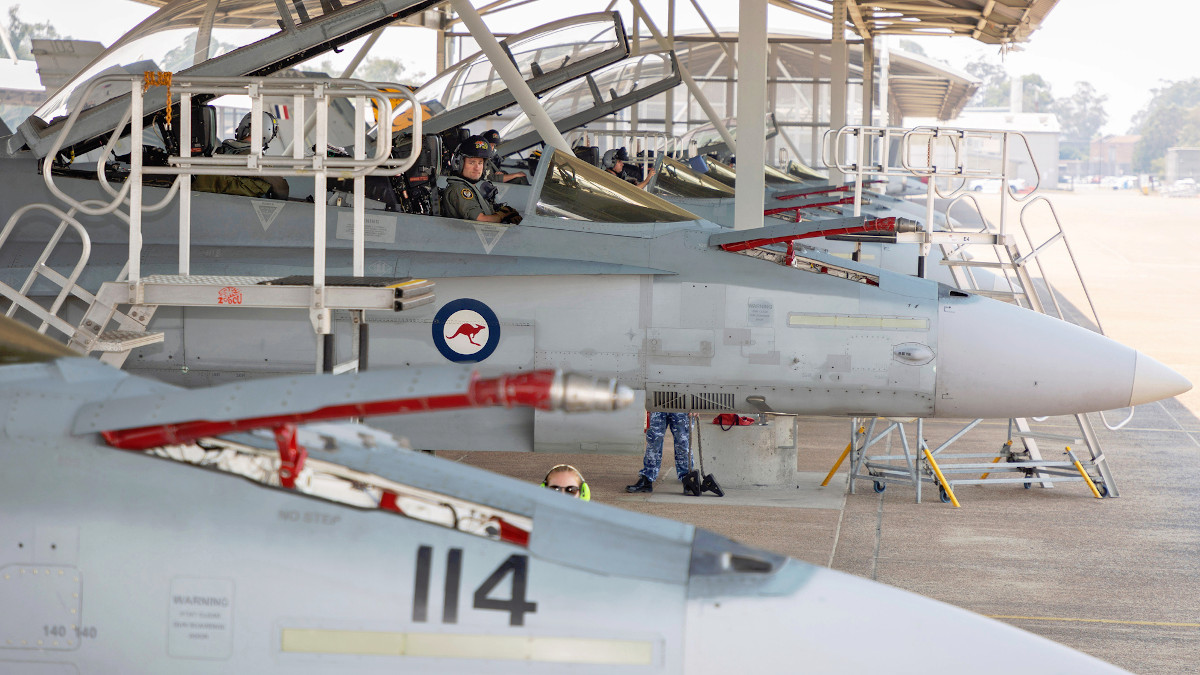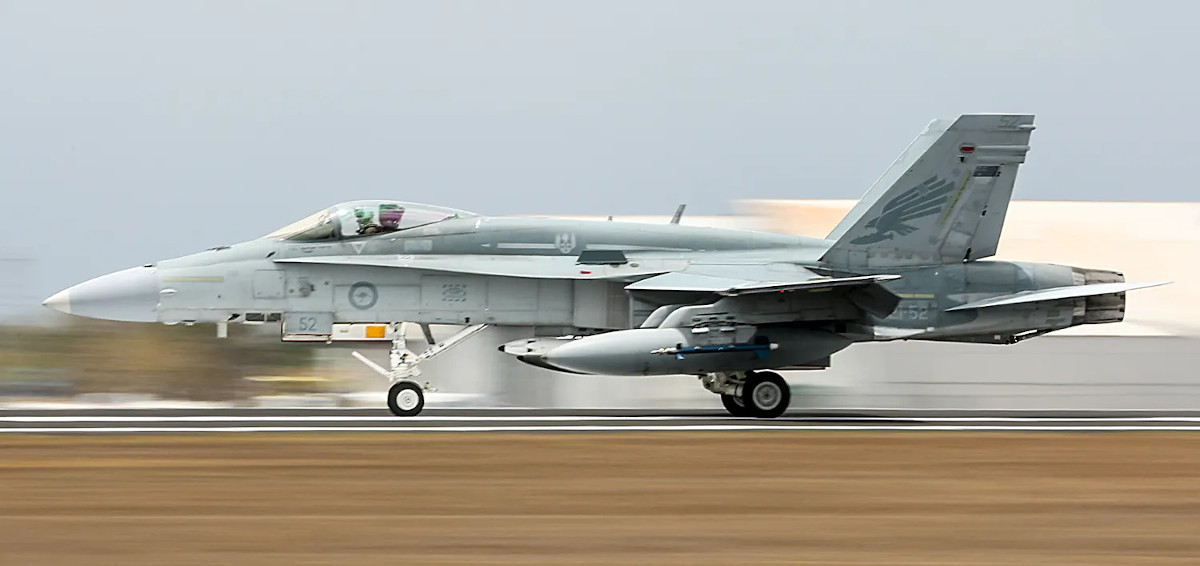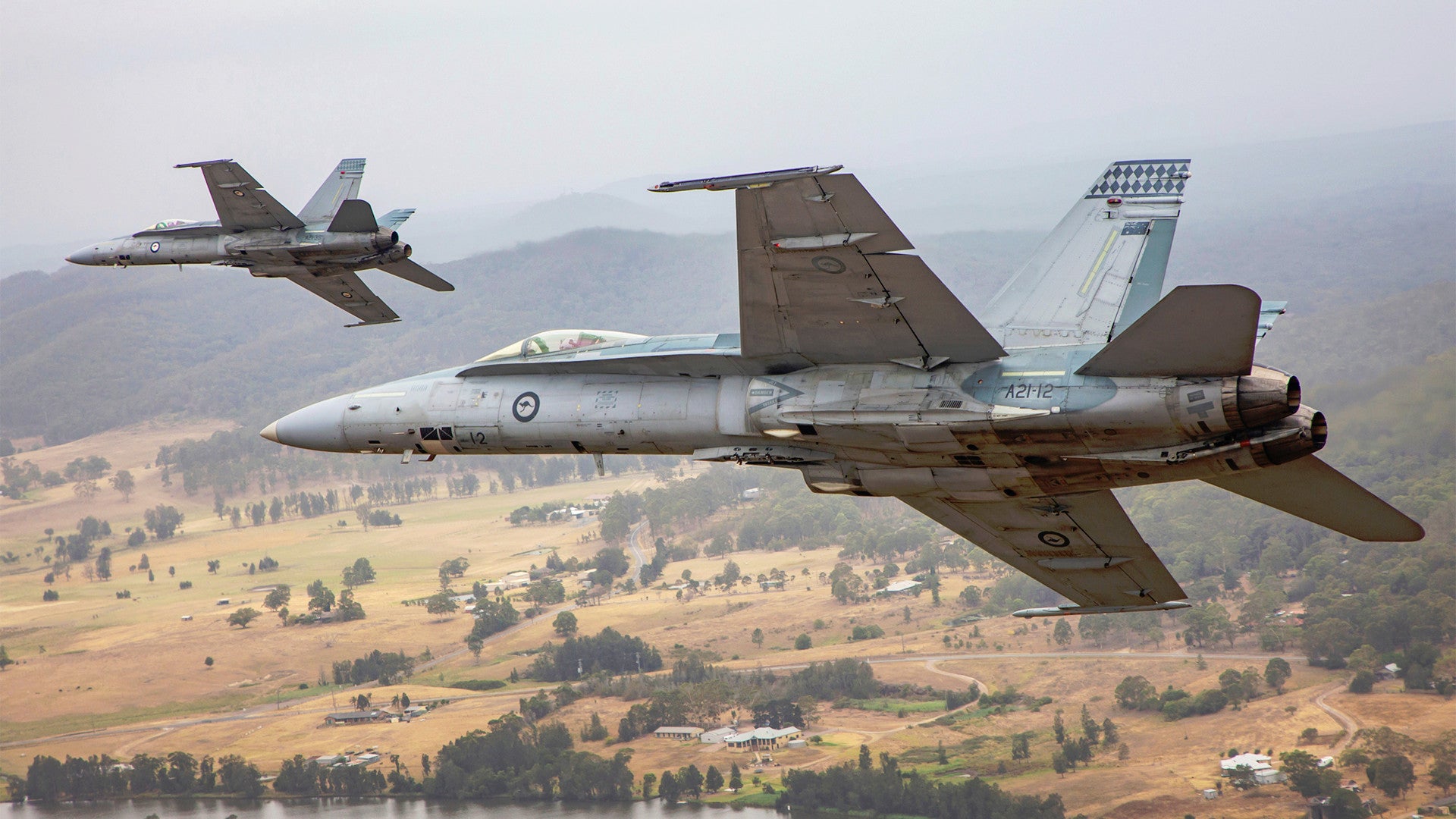Air USA, a private contractor that offers “red air” adversary support, is buying up to 46 soon-to-be-retired F/A-18A/B Hornets from the Royal Australian Air Force. Last year, the U.S. Air Force hired the company, along with six others, under a massive multi-billion dollar training support contract.
The Australian Department of Defense announced the “disposal” of the jets on Mar. 5, 2020. Royal Australian Air Force (RAAF) personnel at RAAF Base Williamtown will be responsible for preparing the aircraft for their transfer to Air USA. Williamtown, which is situated just north of the city of Newcastle, is home to three of the four remaining Australian F/A-18A/B units, No. 3 and No. 77 Squadrons and No. 2 Operational Conversion Unit, the latter of which is responsible for training pilots on the type. No. 75 Squadron is based at RAAF Base Tindal in Australia’s Northwestern Territory.
“The work to prepare these aircraft and components for sale will provide 24 direct industry jobs while Air Force transitions from the Classic Hornet to the F‑35 Joint Strike Fighter,” Melissa Price, Australia’s present Minister for Defence Industry, said in a statement. “Apart from the jobs directly supported by the work at RAAF Base Williamtown, more defense industry jobs are expected to be created across Australia through repair and overhaul work on aircraft servicing components.”
She also said that the deal to prepare the jets, which could take between three and four years in total to complete, would provide job certainty for those workers.

Beginning in 1981, Australia ordered a total of 57 single-seat F/A-18As and 18 two-seater F/A-18Bs from American aviation company McDonnell Douglas, which later merged with Boeing. Four of these jets were subsequently lost in crashes over the years.
Of the remaining 71 Hornets, Australia agreed to sell 25 to Canada in 2017. Canadian authorities decided to buy these jets to supplement the Royal Canadian Air Force’s own CF-18 Hornet fleet as an interim solution while the country continued to look to acquire an all-new fleet of fighter jets, a saga that you can read about in more detail in these past War Zone pieces. The U.S. government, which still exercises export controls over the jets, approved that deal the following year.

It’s unclear if Air USA has formally agreed to buy all of the RAAF’s remaining 46 F/A-18A/Bs. The War Zone has reached out to the company already for comment.
Regardless, the RAAF is steadily retiring the F/A-18A/B Hornets as it continues to acquire new stealthy F-35A Joint Strike Fighters. At present, Australia has received 20 F-35As out of a total order of 72 aircraft.

The Australian Department of Defense does say that Air USA plans to use the aircraft it does receive for air combat training in the United States, which could include sorties as part of the huge adversary air support deal the U.S. Air Force concluded last year. That entire multi-part contract was worth an estimated $6.4 billion, though the exact amounts that each of the seven firms who got hired actually received is unclear.
Air USA isn’t the only one to have made plans to acquire additional combat jets in preparation to meet the requirements of this contract. Airborne Tactical Advantage Company (ATAC) and Draken both purchased second-hand fleets of French-made Mirage F1s, while the latter company bought an additional number of ex-South African Cheetahs, a Mirage III derivative. TacAir bought a group of former Royal Jordanian Air Force F-5E Tiger II jets, which it then upgraded into its F-5AT Advanced Tiger configuration. As of January, Top Aces was still in the process of taking delivery of 29 F-16A Viper fighters from an unknown source, possibly Jordan.
F/A-18A/Bs would certainly offer a TacAir a different kind of capability from the other aircraft in its fleet, which includes Franco-German Alpha Jets, Czech L-59 Albatrosses, and BAE Hawks. All of these are much lighter jets than the Hornets. The company also has a small number of Soviet-era MiG-29UB Fulcrums.
There’s no word on how much Air USA’s purchase of ex-RAAF Hornets is set to cost, but the aircraft could need significant additional upgrades to their systems and basic structure before they can begin flying adversary air sorties. As noted, these jets first entered service in the 1980s and may have limited flight hours left in them unless they receive a major structural overhaul.

A 2018 report from the Office of the Auditor General of Canada said that the country’s Department of National Defense had determined would need at least a billion U.S. dollars just “for spare parts and upgrades to the structure and avionics and electrical systems” on the 25 aircraft it acquired from the RAAF. This figure did not include “any combat capability upgrades,” requirements that Air USA would not necessarily share with an actual air force.
Still, Air USA’s acquisition of even some of the RAAF’s F/A-18A/B Hornets would definitely make it one of the most capable private air forces in the world. We will report back as soon as we get more information about the purchase.
Contact the editor: Tyler@thedrive.com
